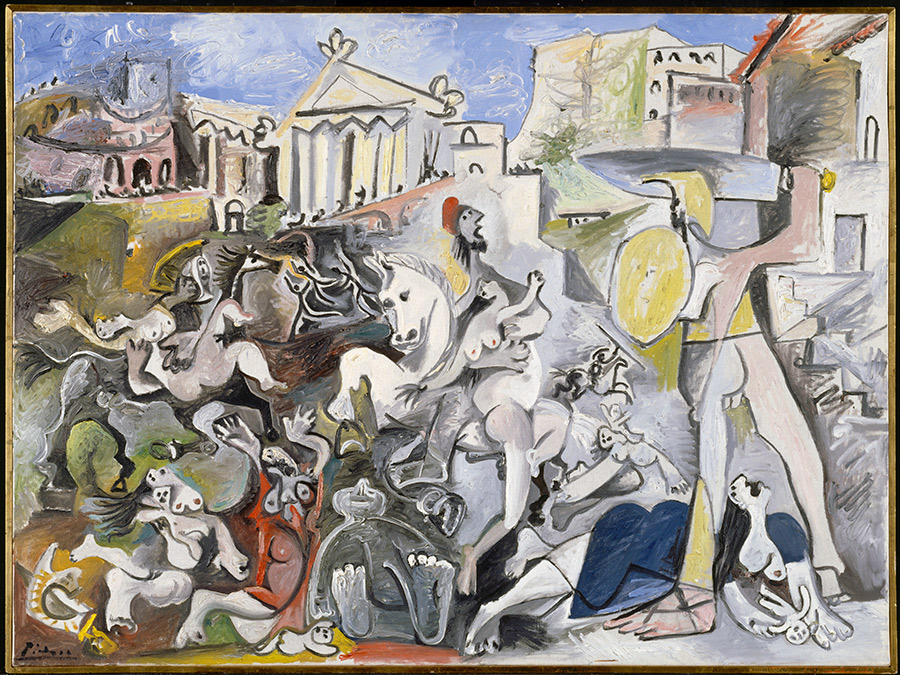The friend Maurice Thorez and some cases of conscience
Although the recent publication of Maurice Thorez's Journal covering the years 1952-1964[1] does not provide specific revelations, it shows a strong bond between the communist leader and the artist. The Secretary General's detailed account of his activities and readings mentions over 30 visits and meals with Picasso, most often in the Midi, where Thorez spent long periods between April 1953 and March 1963. Their connection clearly took a more personal turn from the moment Thorez disavowed the communiqué about the publication of Stalin's portrait.
Their relationship was strained when Picasso signed a letter, published in Le Monde on November 22, 1956, referring to the events in Poland and Hungary and calling for a special congress. The text, which Le Monde titled "Mr. Picasso and nine intellectuals condemn the 'attacks on revolutionary integrity'" was signed by the writer Georges Besson; university professor Marcel Cornu; writer Francis Jourdain; doctor Harel, research fellow at the C.N.R.S.; writer Hélène Parmelin; painters Pablo Picasso and Édouard Pignon; Paul Tillard, former editor of l'Humanité; Henri Wallon, honorary professor at the Collège de France; and René Zazzo, professor at the Institut de psychologie.
"The past few weeks have posed burning questions of conscience for communists, which neither the Central Committee nor l'Humanité have helped them answer. An astonishing lack of information, a veil of silence, and more or less deliberate ambiguities have disconcerted people's minds, leaving them either disarmed or willing to yield to all the temptations that our adversaries have offered on their side."
"These attacks on revolutionary integrity started gaining momentum after the twentieth Congress, when the Khrushchev report appeared on the national and international scene. The interpretations given to the events in Poland and Hungary finally brought confusion to a head, and the consequences were soon apparent. The countless manifestos circulating among intellectuals and workers alike are indicative of a deep malaise across the entire Party, which the surge of unity in the fight against fascism has been unable to conceal [...]. The signatories aim to object in advance to any tendentious interpretation of this collective letter, to any questioning of their loyalty to the Party and its unity."
The letter was condemned by the Central Committee, and Picasso and Thorez argued about the matter.
Nevertheless, in 1964, Picasso told the American art critic Carlton Lake (who collaborated with Françoise Gilot in writing the book Living with Picasso that same year) that for him, communism represented "a certain ideal" which he continued to uphold.
Picasso's political involvement became less apparent from the 1960s onwards, even though one can find traces of his moments of outrage in his work. When France engaged in the Algerian war, the artist worked on his version of Delacroix's Femmes d’Alger dans leur appartement, while the Cuban missile crisis and its threat of nuclear war led him to revisit Poussin's L’Enlèvement des Sabines and Les Sabines by David.
[1] Maurice Thorez, Journal 1952-1964, edited by Jean-Numa Ducange and Jean Vigreux, Paris, Fayard, 2020.





 Summary
Summary